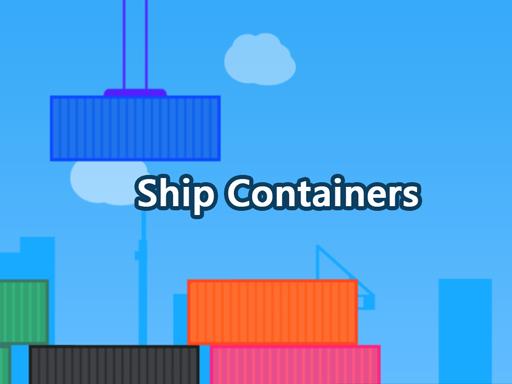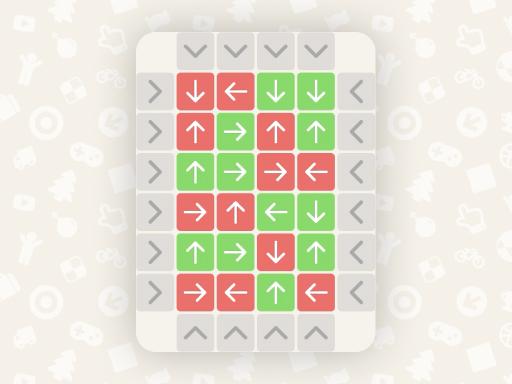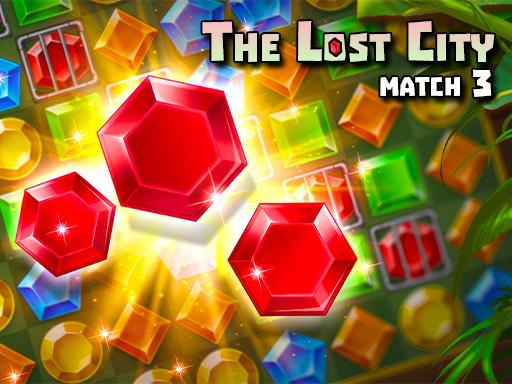New Games
Ship containers
Introduction and How to Play the Game Ship Containers
Ship Containers is an exciting and strategic puzzle game where the player must manage and organize a variety of containers being loaded and unloaded from ships. The goal is to efficiently stack, move, and arrange containers to maximize space and ensure everything is securely in place before the ship sets sail. With each level, the complexity increases, requiring careful planning and attention to detail.
The game typically involves loading containers onto a ship or unloading them at a dock. Each container comes with different sizes and shapes, and the challenge is to fit them in the available space while avoiding obstacles and adhering to specific rules. Ship Containers combines spatial reasoning, timing, and organizational skills to offer a fun and challenging experience.
Objective of the Game
The primary objective in Ship Containers is to organize the containers within the ship’s cargo hold (or on the dock) by arranging them in a way that maximizes space while following specific guidelines for each level. As the game progresses, you’ll face increasingly difficult challenges where the containers may have different sizes, weights, or characteristics that require different strategies to load and unload efficiently.
Some levels may involve specific goals, such as stacking containers in a certain order, unloading them in a precise sequence, or avoiding damage to fragile goods. Your performance is typically measured based on how quickly you complete the task, how well you organize the containers, and if you can achieve any special objectives.
How to Play Ship Containers
1. Basic Gameplay:
- Loading and Unloading Containers: The game involves loading or unloading containers from a ship, dock, or warehouse. Players are given a set number of containers to manage, and they must figure out how to place or remove them in the most efficient way possible.
- Drag and Drop: You can usually drag and drop containers into available spaces. For loading, the containers need to be stacked according to size, weight, or type, while unloading may require you to remove containers in reverse order (like a reverse Tetris-style puzzle).
- Space Management: A key element of the game is managing the limited space available for containers. Containers may come in different shapes and sizes, and the challenge is to fit them into the space while ensuring they are stable and accessible.
2. Types of Containers:
- Standard Containers: These are the most common type, usually rectangular in shape and easy to fit into the ship’s cargo hold. The challenge here is mainly fitting as many as possible in a single load.
- Special Containers: Some levels may feature containers with special shapes or specific characteristics. These may need to be placed carefully to prevent damage or to balance the load in a certain way.
- Fragile Containers: Some containers may be marked as fragile or perishable, requiring extra care during loading or unloading. These containers might need to be placed at the top or in positions where they are less likely to be disturbed.
3. Level Progression and Difficulty:
- Increasing Complexity: As you progress through the levels, the game introduces more complex tasks. You might have to work with multiple ships, a variety of container types, or additional constraints such as time limits or restrictions on how containers can be moved.
- Time Limits and Challenges: Some levels may feature a time limit or additional challenges, such as a limited number of moves or specific container arrangements. These challenges require players to think quickly and efficiently in order to complete the tasks.
4. Controls and Mechanics:
- Click and Drag: In most versions of the game, you’ll interact with the containers by clicking and dragging them into place. It’s essential to have good precision when placing containers, as moving them around too many times can waste valuable time or space.
- Rotation Mechanism: Some games may allow you to rotate containers to fit them better into the available space. This adds an additional layer of strategy, as you’ll need to think about how best to utilize the available space.
5. Scoring and Progression:
- Efficiency Scoring: Players are usually scored based on how efficiently they load or unload containers. The faster you complete the level, the higher your score. Additionally, neatly arranged containers (with minimal empty space or wasted moves) will earn you extra points.
- Unlocking New Levels: Completing levels successfully will unlock new challenges and environments. Some games may also feature a leaderboard, where you can compare your performance with others.
Tips for Playing Ship Containers
- Plan Ahead: Always take a moment to look at the available space before you start moving containers. Planning your moves in advance can save time and avoid mistakes. Think about which containers can be stacked together or which ones need to go in certain areas first.
- Think About Container Sizes: Larger containers will generally need to go in the lower levels, as they take up more space. Make sure smaller containers are placed on top or in gaps between larger ones.
- Don’t Waste Space: Try to maximize the space in the ship’s cargo hold by placing containers in every available nook and cranny. Gaps or empty spaces will reduce your score, so aim to fill all available space as efficiently as possible.
- Keep Fragile Containers Safe: If the game involves fragile containers, make sure they are placed carefully where they won’t be disturbed by other containers. Usually, this means putting them on top or in a secure spot.
- Use Rotations: If the game allows, rotate the containers to see if they fit better in certain spaces. Sometimes a slight rotation can make a big difference in fitting everything snugly.
- Consider Time Limits: If a level has a time limit, try to balance between speed and accuracy. It’s important to act quickly, but making a lot of unnecessary moves can also cost you precious seconds.
- Practice Makes Perfect: The more you play, the better you’ll become at visualizing how to fit the containers in limited spaces. Don’t be discouraged by challenging levels—try different strategies and approaches to improve.
Conclusion
Ship Containers is a highly engaging and intellectually stimulating puzzle game that challenges players to think critically about space management and organization. The game’s various levels, container types, and increasing complexity provide a fresh and exciting challenge as you progress. Whether you’re loading containers for a busy port or unloading them from a bustling ship, the game offers endless opportunities to practice strategic thinking and spatial reasoning. If you’re a fan of puzzles and love the satisfaction of perfectly packed containers, Ship Containers is sure to keep you entertained for hours.
Instructions
Tap and Drop containers to the Ship.
 Home
Home Popular Games
Popular Games Categories
Categories






















